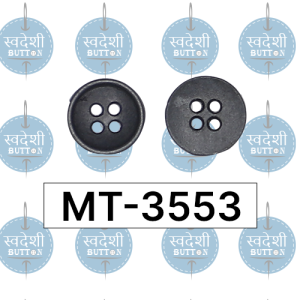Welcome to the world of custom button making, where artistry meets functionality most exquisitely! Today, we take you on a journey through the vibrant lanes of India, where age-old craftsmanship has been perfected over generations – Swadeshi Buttons. Prepare to be captivated by their intricate designs and impeccable attention to detail that transforms every garment into a masterpiece. Join us as we unravel the fascinating story behind these tiny treasures and explore how this ancient craft continues to thrive in modern times. Get ready to discover the art of Custom Garment Button Makers – a true testament to India’s rich cultural heritage!
Explaining the significance of buttons in fashion and the rise of custom button-making.
Introduction: Explaining the Significance of Buttons in Fashion and the Rise of Bulk Clothing Button Suppliers are small but mighty accessories that have played a significant role in fashion for centuries. They may seem like simple details, but they can make or break an outfit, adding both functionality and style to any garment. From delicate pearl buttons adorning elegant gowns to bold statement buttons on military uniforms, these small fasteners have been used as a form of self-expression and cultural significance.

The history of buttons dates back to ancient civilizations, with evidence of their existence found in Egyptian tombs dating back to 2000 BCE. Initially made from materials such as bone, wood, and shell, buttons were primarily used for practical purposes to fasten garments together. However, as fashion evolved and developed into an art form, so did the importance of buttons. In India, the use of buttons in clothing has a long history deeply rooted in tradition and culture.
History of Swadeshi Buttons: Briefly discuss the origins and evolution of Swadeshi buttons in India.
The history of Swadeshi buttons in India dates back to the early 20th century during the Indian independence movement. The term “Swadeshi” refers to the concept of self-reliance and promoting local industries, which was a key principle of the movement. During this time, India was under British rule and heavily reliant on imported goods, including buttons for clothing.
This led to an increase in demand for locally made buttons as a way to boycott foreign products and support indigenous craftsmanship. As a result, various artisans and small businesses started producing handmade buttons using traditional techniques.
He believed that encouraging the production of Swadeshi buttons, would not only promote self-sufficiency but also provide employment opportunities for local communities. Initially, Fashion Button Suppliers were made using materials such as wood, bone, and shell. These were sourced from natural resources found within India, making them truly indigenous creations. However, with advancements in technology and trade restrictions imposed by the British government, artisans had to find alternative materials such as coconut shells and horns.
As the Indian independence movement gained momentum, so did the demand for Sewing Button Wholesalers. They became a symbol of patriotism and resistance against colonial rule. People from all walks of life started wearing clothes adorned with these handcrafted buttons as a sign of solidarity with the cause.
Visit Us -: Digital Marketing Agencies
